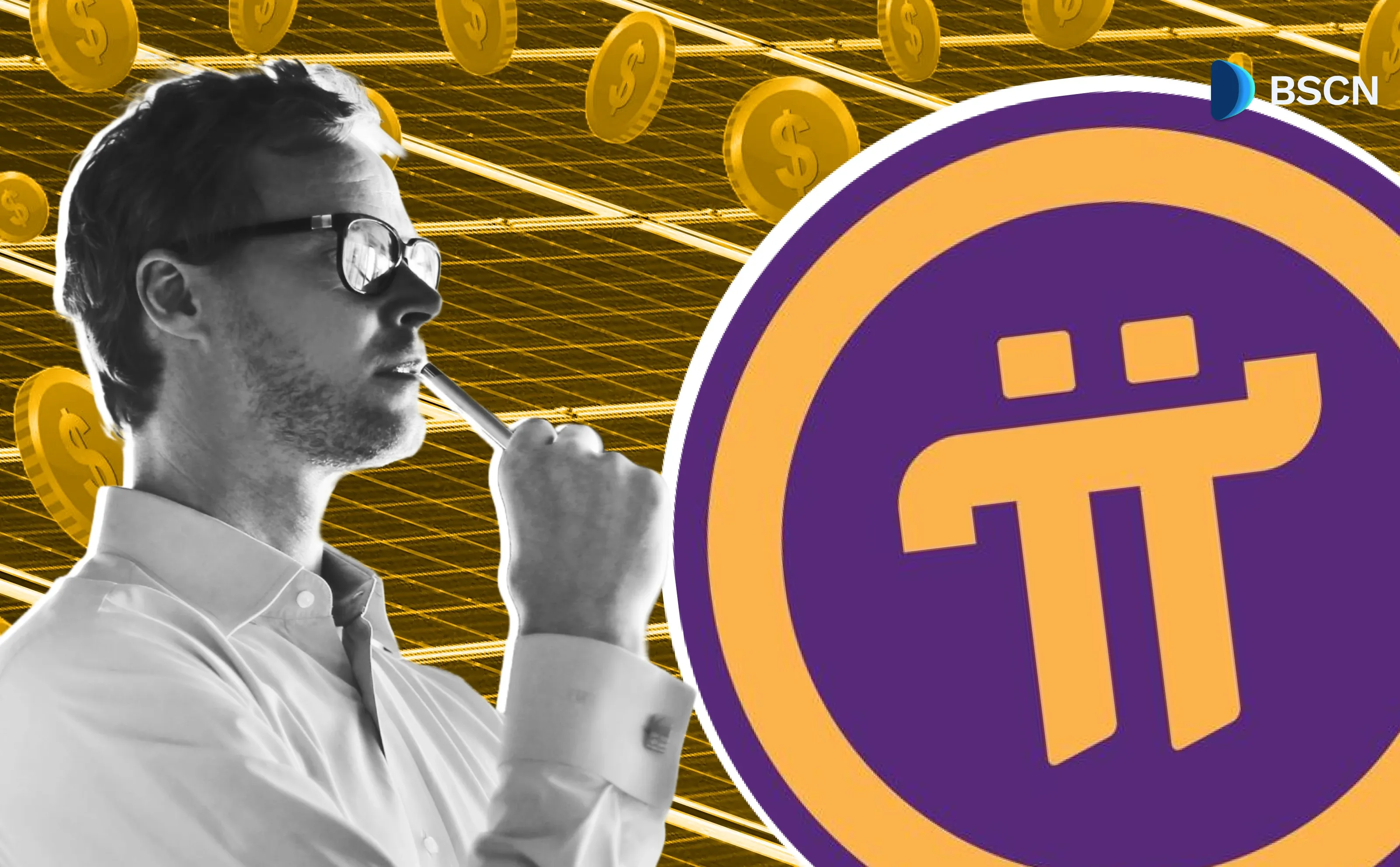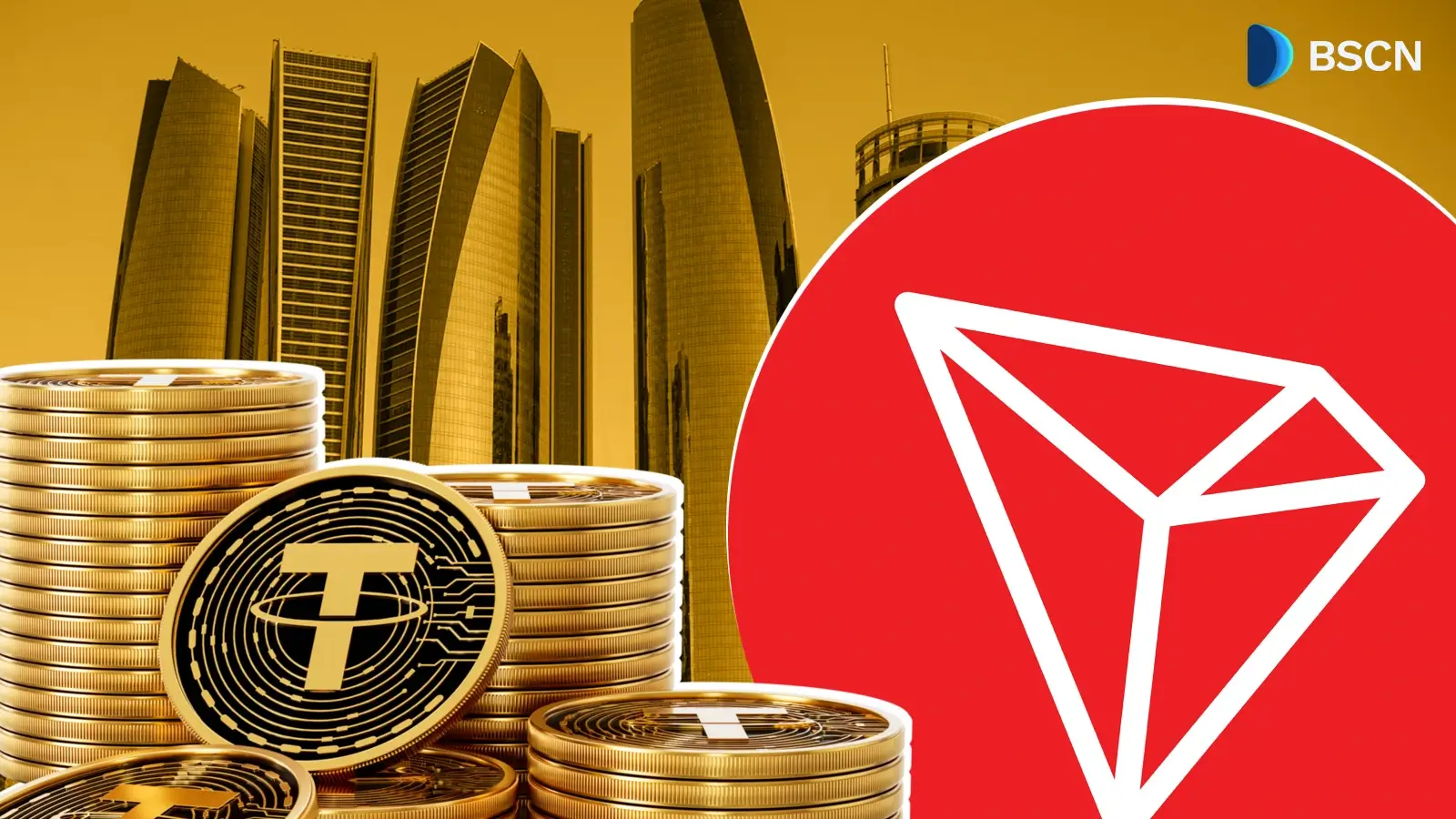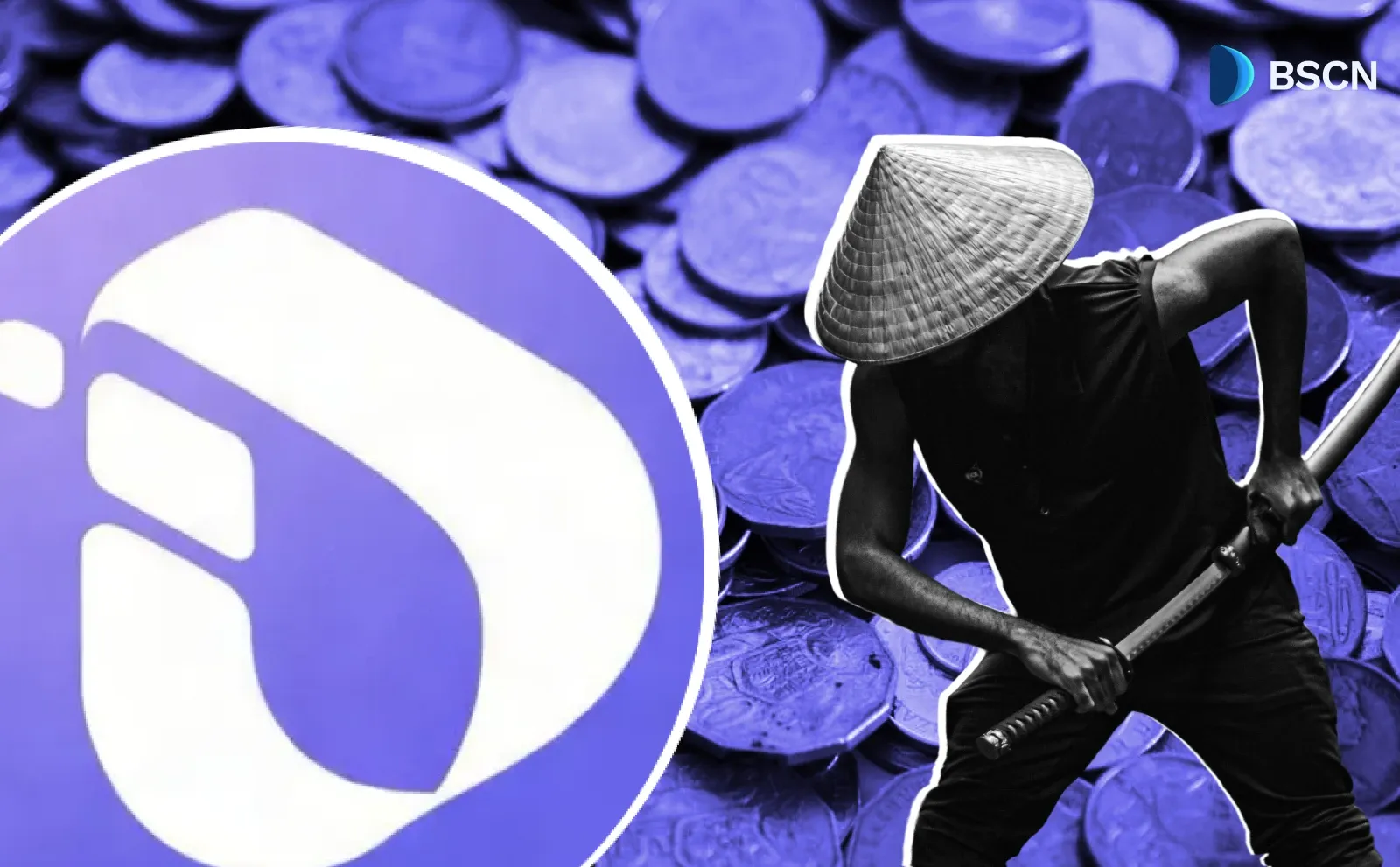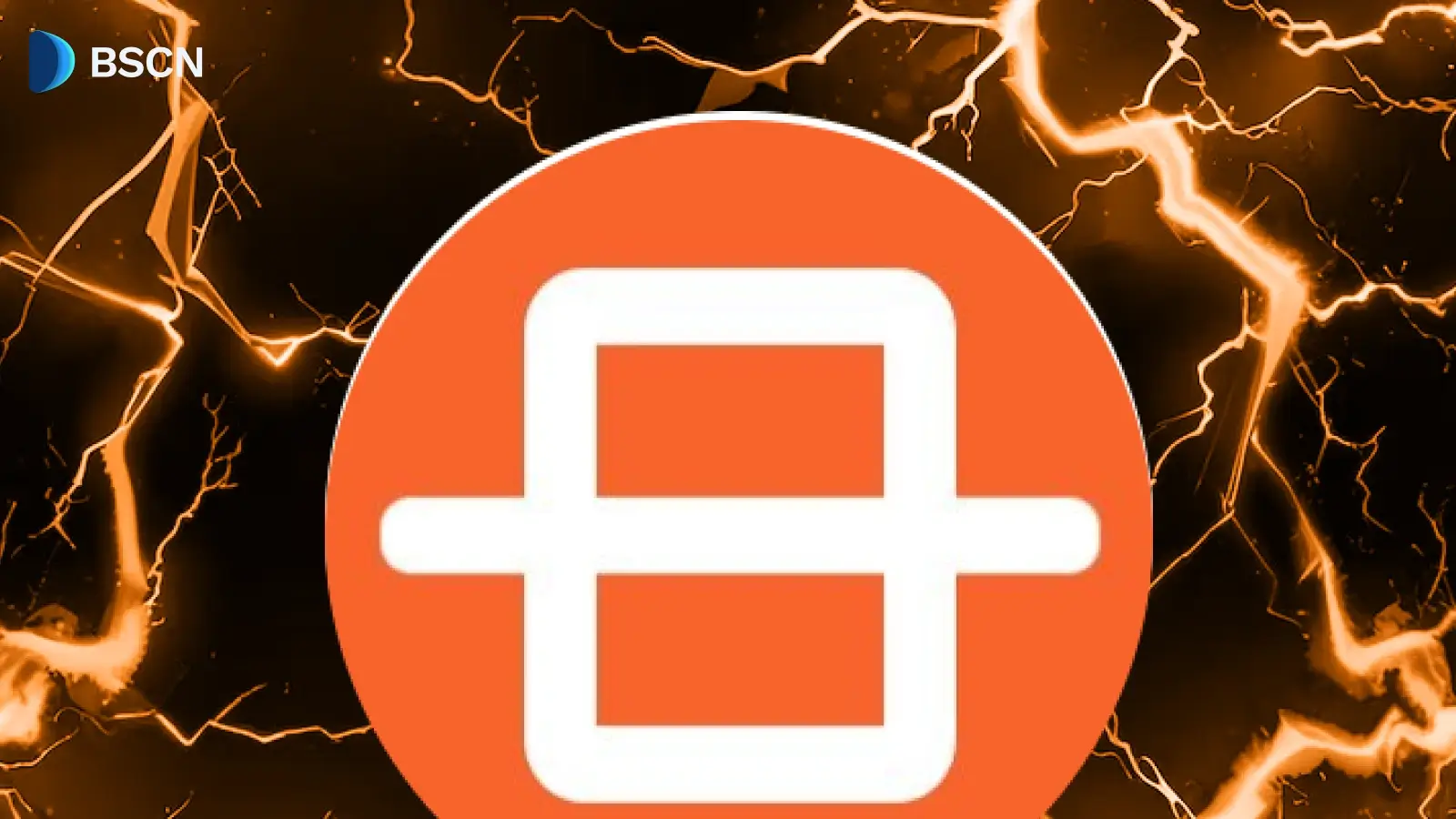Deepdive
(Advertisement)
Kaspa Deepdive & Guide: The Revolutionary Layer-1 Protocol

What is Kaspa and how does it work? What is the KAS token? Explore the fastest open-source Layer-1 blockchain using revolutionary blockDAG technology, in our full guide and analysis.
Crypto Rich
March 5, 2025
(Advertisement)
Table of Contents
What is Kaspa?
Kaspa is a revolutionary Layer-1 blockchain protocol that utilizes blockDAG technology to process multiple blocks simultaneously, achieving transaction speeds of 3,000-4,000 per second with 10-second confirmation times—making it one of the fastest open-source blockchains available.
Kaspa stands out as a Layer-1 blockchain in the cryptocurrency sector, known for its focus on speed and scalability. It launched on November 7, 2021, without any premine, pre-sales, or allocated coins, it prioritizes decentralization and security. The protocol utilizes a proof-of-work consensus mechanism and blockDAG technology, which enables parallel block processing. This design aims to address common issues in traditional blockchains, such as slow transaction times and limited throughput.
The name "Kaspa," derived from Aramaic words for "silver" and "money," positions it as a digital asset suited for everyday transactions, complementing Bitcoin's role as digital gold. The protocol's fair launch has contributed to its community-driven development. Developers and users from over 16 countries contribute to its open-source code on GitHub, ensuring transparency and collaborative progress. This approach has helped Kaspa build a reputation for reliability in a competitive market.
As of writing, Kaspa operates at 10 blocks per second following the Crescendo Hardfork in May 2025. This upgrade has enabled average confirmation times of about 10 seconds and transaction processing rates of 3,000 to 4,000 per second.
Core Technology: BlockDAG and GHOSTDAG
At the heart of Kaspa is its blockDAG structure, a departure from the linear blockchain model used by networks like Bitcoin and Ethereum. BlockDAG permits multiple blocks to be created simultaneously, incorporating them into the ledger without discarding any as orphans. This results in higher efficiency and faster processing.
Traditional blockchains like Bitcoin face a fundamental limitation - they must maintain slow block creation rates to prevent "orphan blocks" that occur when network propagation delays cause miners to create competing blocks.
Kaspa's blockDAG technology solves this limitation by:
- Enabling parallel block creation rather than sequential
- Processing all blocks simultaneously by linking side-chains
- Incorporating "orphan" blocks into the ledger instead of discarding them
- Using a novel greedy algorithm to order blocks, favoring honest, well-connected blocks
The blockDAG architecture overcomes traditional blockchain limitations by processing blocks in parallel and linking all side-chains. This structure dramatically increases block formation rates while maintaining decentralized security.
This architecture allows Kaspa to maintain the security guarantees of Bitcoin while dramatically increasing throughput and reducing confirmation times. The current mainnet operates with one block per second, with plans to dramatically increase this rate following the implementation of the completed Rust rewrite.
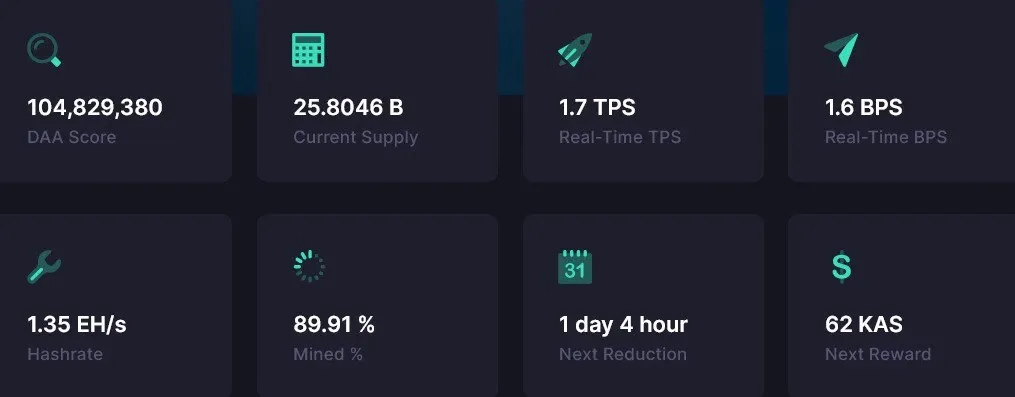
The GHOSTDAG protocol, an extension of Nakamoto Consensus, plays a key role here. It classifies blocks as "Blue" for well-connected, honest ones and "Red" for others, ensuring a consistent order. This maintains security against 51% attacks while supporting rapid block production. Benefits include reduced mining variance and a balanced fee market, where even low-fee transactions can be included during periods of low network usage, such as when capacity is at 11%.
Following the Crescendo Hardfork, the network's throughput increased tenfold from 1 block per second to 10. This enhancement has improved responsiveness without affecting decentralization or security, according to network metrics.
The Crescendo Hardfork: A Major Upgrade
The Crescendo Hardfork, activated on May 5, 2025, represented a significant milestone for Kaspa. Implemented through KIP-14, it involved a complete rewrite of the codebase from Golang to Rust, known as Rusty-Kaspa. The upgrade proceeded without interruptions, enhancing performance and features.
Key changes include:
- Increased Throughput to 10 BPS: This boost expands capacity for transactions while keeping costs low and maintaining security.
- Payloads Support: Users can now attach data to blocks, opening possibilities for smart contracts and applications beyond basic transfers.
- Arbitrary Applications: Developers can create decentralized finance (DeFi) tools, traditional finance integrations, DAOs, games, and identity systems.
- Additive Addresses and Covenants (KIP-10): These support micro-transactions and advanced scripting for programmable payments.
- Additional KIPs: KIP-4, 9, 13, and 15 improve efficiency, fairness, and scalability.
- Python SDK and Audits: New tools for developers and security checks for integrations like Zealous Swap.
Since activation, the hardfork has operated smoothly, promoting miner decentralization and making solo mining more viable. Network hashrate has risen, reflecting growing participation.
Advanced Technical Features
Kaspa's implementation includes several technical innovations:
- Reachability: Advanced query capabilities for DAG topology
- Block Data Pruning: Efficient data management with block header pruning
- SPV Proofs: Simplified payment verification for lightweight clients
- Subnetwork Support: Foundations for future Layer 2 solutions
- Cryptographic Receipts: Verifiable proofs of transaction acceptance
- Harmonic Mass Formula: Solution to prevent state bloat attacks
Community-Driven Development
Kaspa stands as a decentralized project with open community participation. The development is led by industry pioneers but involves contributions from community members worldwide:
- 100% open-source code base on GitHub
- Development contributions from a global team spanning 16+ countries
- Transparent development process with community input
This open approach to development aligns with the decentralized ethos of the project.
Rust Rewrite and Performance Breakthrough
Kaspa has undergone an extensive core rewrite in Rust Programming Language, the rewrite known as Rusty-Kaspa has transformed the codebase to enable record efficiency and industry-leading performance while establishing the groundwork for smart contracts.
The Rusty-Kaspa client was initiated by former DAGLabs developer Michael Sutton and developed by a global team. The implementation is remarkably efficient, allowing high-throughput operation on affordable hardware - full nodes have successfully run on Raspberry Pis, decade-old laptops, and even mid-tier mobile phones.
The rewrite will introduce unprecedented throughput, with initial estimates targeting 32 blocks per second (one block every ~31 milliseconds), with future projections of 100 blocks per second. The rewrite was functionally advanced by Q2 2023 (Testnet 11) but not fully "completed" until later (stable release in 2024).
Kaspa currently maintains two test networks: Testnet 10 (TN-10), which accurately replicates the current mainnet, and Testnet 11, which showcases the Rust implementation. Testnet 11 has run effectively since mid-2023, and now operates between 2400 and 3000 transactions per second over 10 blocks per second. The Crescendo hard-fork brought these, among other improvements, to the mainnet.
ZK-Rollups Support
With this enhanced performance, Kaspa is uniquely positioned to handle ZK-rollups, enabling a diverse Layer 2 ecosystem that inherits Kaspa's security, censorship resistance, and MEV resistance while ensuring L2s remain tied to the main chain.
Tokenomics:
Kaspa started and had a true fair-launch on November 7, 2021, with no premine, no pre-sales, and no allocated coins. The cryptocurrency follows key distribution principles:
- Max Supply: Approximately 28.7 billion KAS
- Circulating Supply: Currently 26.51 billion KAS (July 30, 2025)
- Emission Schedule: Halves once per year via smooth monthly reductions by a factor of (1/2)^(1/12). The current block reward is ±4.9 KAS (July 30, 2025)
- Fair Mining Evolution: Started with CPUs, expanded to GPUs, FPGAs, and now includes ASICs
Token Distribution
Analysis of Kaspa's token distribution shows a remarkably balanced ecosystem. Over 70% of addresses hold between 0.01-10K KAS, while mid-sized wallets (1K-100K KAS) contain roughly 30% of circulating supply, forming a strong community foundation.
Large wallets (10M+ KAS) control about 43% of supply—notably lower concentration than comparable projects where often 20 addresses control over 50%. Only 17 addresses hold more than 100M KAS (22.5% of supply); these might be exchange addresses, indicating healthy distribution at the top. (snapshot March 2025)
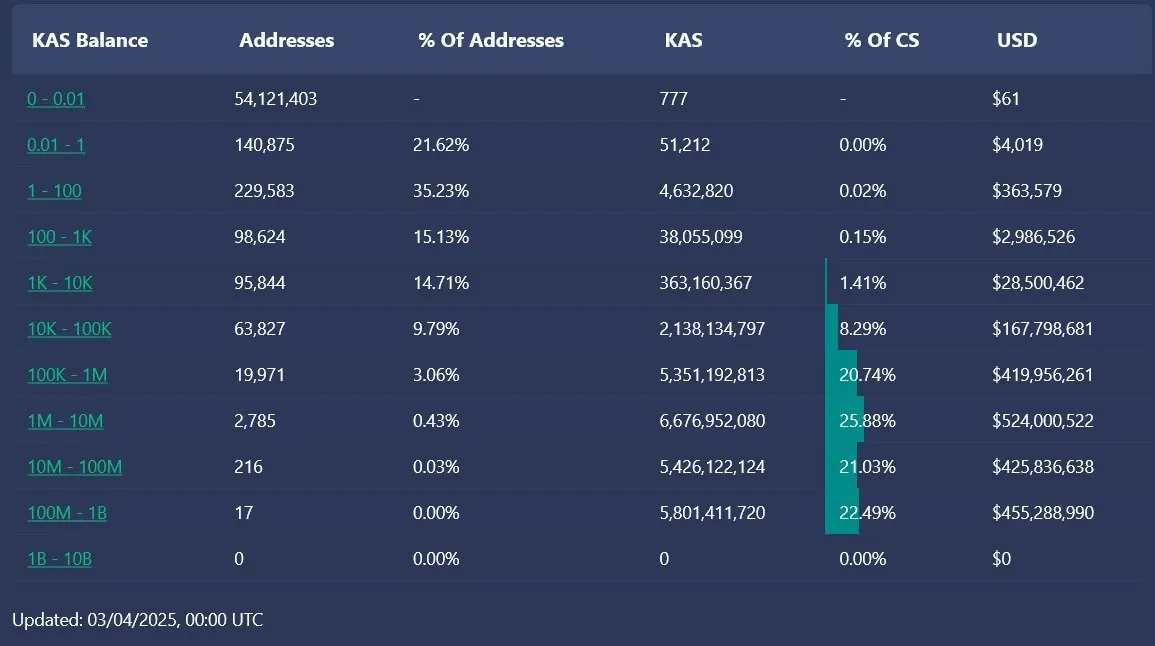
Conclusion: Beyond the Block
Kaspa represents a fundamental advancement in blockchain technology, successfully addressing the core limitations that have constrained cryptocurrencies since Bitcoin's inception. By maintaining the security and decentralization principles of Nakamoto's original design while dramatically improving speed and throughput, Kaspa stands as a genuine realization of the peer-to-peer electronic cash system described in the Bitcoin whitepaper.
With one-second block times, ten-second full confirmations, and an open-source approach to development, Kaspa provides the technical foundation needed for cryptocurrency to achieve mainstream adoption for everyday transactions. The project continues to evolve through its Rust implementation and the Crescendo hard-fork, Kaspa could become a cornerstone technology in the blockchain ecosystem.
To find out more about the Kaspa, visit their website at kaspa.org or join the community on their Discord server.
Sources
Read Next...
Frequently Asked Questions
What makes Kaspa faster than traditional blockchains like Bitcoin?
Kaspa uses blockDAG technology instead of a linear blockchain structure, allowing multiple blocks to be created simultaneously rather than sequentially. This parallel processing, combined with the GHOSTDAG protocol, enables the network to maintain security while achieving 10 blocks per second and processing 3,000-4,000 transactions per second with 10-second confirmation times.
How does Kaspa's fair launch differ from other cryptocurrency projects?
Kaspa launched on November 7, 2021, with zero premine, no pre-sales, and no allocated coins to founders or investors. All tokens entered circulation through mining, starting with CPUs and evolving to include GPUs, FPGAs, and ASICs. This approach ensures genuine decentralization and community-driven development across 16+ countries.
What was the Crescendo Hardfork and how did it improve Kaspa?
The Crescendo Hardfork, activated on May 5, 2025, represented a complete rewrite from Golang to Rust (Rusty-Kaspa). It increased throughput from 1 to 10 blocks per second, added payload support for smart contracts, enabled arbitrary applications, and introduced features like additive addresses and covenants while maintaining security and decentralization.
Disclaimer
Disclaimer: The views expressed in this article do not necessarily represent the views of BSCN. The information provided in this article is for educational and entertainment purposes only and should not be construed as investment advice, or advice of any kind. BSCN assumes no responsibility for any investment decisions made based on the information provided in this article. If you believe that the article should be amended, please reach out to the BSCN team by emailing [email protected].
Author
 Crypto Rich
Crypto RichRich has been researching cryptocurrency and blockchain technology for eight years and has served as a senior analyst at BSCN since its founding in 2020. He focuses on fundamental analysis of early-stage crypto projects and tokens and has published in-depth research reports on over 200 emerging protocols. Rich also writes about broader technology and scientific trends and maintains active involvement in the crypto community through X/Twitter Spaces, and leading industry events.
(Advertisement)
Latest News
(Advertisement)
Crypto Project & Token Reviews
Project & Token Reviews
Comprehensive reviews of crypto's most interesting projects and assets
Learn about the hottest projects & tokens





